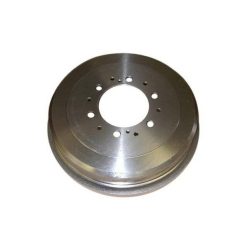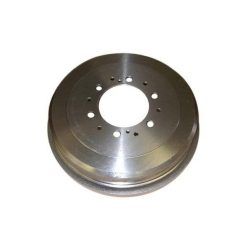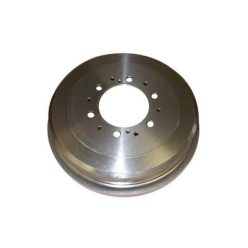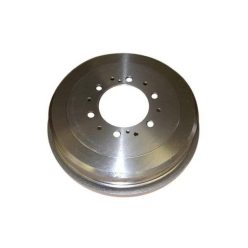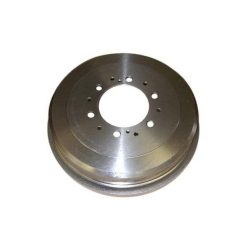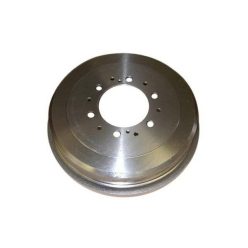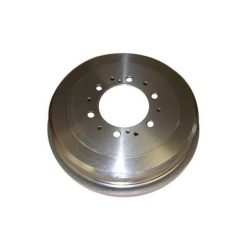EBC Brake Drums brings together OEM-style brake drums from EBC Brakes for a wide range of vehicles, including Audi, BMW, Ford, Citroën, Peugeot, Volkswagen and more. The DM-series OEM replacement drums are manufactured in Europe from hard-wearing, high grade grey cast iron and precision-machined to tight tolerances for smooth braking and low vibration. Each EBC drum is a direct-fit replacement for the original part, offering reliable, long-lasting performance on rear drum brake applications.
Net price: 62 €
Net price: 83 €
Net price: 145 €
Net price: 83 €
Net price: 85 €
Net price: 85 €
Net price: 72 €
Net price: 128 €
Net price: 90 €
Net price: 86 €
Net price: 119 €
Net price: 64 €
EBC brake drums – OEM replacement quality with European manufacturing
EBC Brake Drums is a dedicated category for OEM-specification replacement brake drums from EBC Brakes. Here you will find DM-series drums covering a broad selection of European and Japanese vehicles – from everyday hatchbacks and estates to light commercials and classics such as the Mini. Part numbers like DM003, DM007, DM010 and many others are tied to specific makes, models, engines and years, so you can match the correct drum to your axle with confidence. Each drum is designed to install directly in place of the factory unit, using the same mounting pattern and dimensions.
EBC Brakes is a well-known European brake specialist producing pads, discs, brake drums, lines and complete braking solutions. Its DM-series drums are marketed as OEM replacement parts that meet or exceed the performance of original equipment. According to independent reseller information, all EBC brake drums are European-made and around 96% are cast and machined in the UK, then finished to very fine manufacturing tolerances. This focus on local production and strict quality control helps ensure consistent friction surfaces, accurate geometry and long service life in demanding conditions.
Technical Basics
EBC OEM replacement brake drums are produced from hard-wearing, high-grade grey cast iron selected specifically for drum brake applications. Grey cast iron offers excellent heat capacity and stable friction behaviour, making it well suited to absorbing the energy generated during repeated braking events. The inner friction surface of each drum is precision-machined to tight tolerances, helping the brake shoes to seat evenly and reducing the risk of hot spots that can lead to judder or noise.
Geometric accuracy is equally important. Run-out and roundness tolerances directly affect pedal pulsation, vibration and rear-axle stability under braking. EBC drums are advertised as being machined to the “finest tolerances”, which improves concentricity and balance compared with many budget aftermarket options. For modern ABS- and ESC-equipped vehicles, smooth, consistent drum rotation supports stable wheel-speed signals and helps electronic stability systems operate correctly. In many cases, EBC drums are described by resellers as higher quality than generic OEM-type drums on the market.
In a drum brake system the wheel is bolted to the brake drum, which rotates with the hub or axle. When hydraulic pressure is applied, the wheel cylinder pushes the shoes outwards against the inner surface of the drum, generating friction that slows or stops the vehicle. Because the friction surface is enclosed, drum brakes can trap heat; excessive thermal loading may cause drum expansion and brake fade. High-grade material, adequate wall thickness and accurate machining all help mitigate distortion and maintain consistent braking behaviour over time.
Selection Criteria
When choosing an EBC brake drum, the first step is accurate vehicle identification: make, model, generation, engine, year of manufacture and whether the drum is on the front or rear axle. DM-series part numbers are application-specific, and catalogues list compatible vehicles plus key dimensions such as drum diameter, width, centre bore and bolt pattern. You should always choose based on the official application data rather than guessing from appearance alone; an incorrect drum may not fit the hub correctly, or could result in shoe contact issues and uneven braking.
The next decision is whether you are performing a simple drum replacement or a complete drum brake overhaul. If the old drums are heavily scored, heat-checked, cracked or have already been machined close to their service limit, replacement is strongly recommended. Best practice is to replace drums in axle pairs so that both sides share the same friction characteristics and wear rate. On heavily loaded vehicles such as vans and light commercials, upgrading to high-quality EBC drums is particularly beneficial because they offer improved durability and heat resistance compared with many low-cost aftermarket parts.
Dimensional data such as nominal diameter and maximum machining diameter are usually published in catalogues or technical notes. If your vehicle has undergone modifications – for example axle swaps, rear disc conversions on some cars, or imported versions with different brake hardware – verifying the existing part number on the original drum can avoid mistakes. Because the brake drum is a safety-critical component, it is worth consulting a workshop or brake specialist if there is any doubt about fitment.
Installation & Maintenance
Correct installation of EBC brake drums is essential for safety and long-term performance. The new drums’ friction surfaces and the new or reused shoes should be thoroughly cleaned with brake cleaner to remove any protective oils or contaminants. Bearing lubrication, seals and hub hardware must be handled according to the vehicle manufacturer’s instructions, and all fasteners tightened to the proper torque values. After assembly, verify that the drum rotates freely without dragging, and that the shoe adjusters and parking brake mechanism operate smoothly.
In service, typical signs of drum issues include a pulsating pedal, vibration under braking, overheating of one wheel or poor handbrake performance. These symptoms can indicate out-of-round drums, contaminated friction surfaces, seized adjusters or parking brake hardware, or hydraulic problems. EBC drums fitted as part of a properly refurbished drum brake assembly should deliver smooth, even braking without judder. Vehicles that regularly tow, descend long mountain passes or operate heavily loaded warrant more frequent inspection of drums, shoes, cylinders and hardware, and earlier replacement if wear or heat damage is found.
FAQ
What does “OEM replacement” mean for EBC brake drums?
For EBC OEM replacement drums, the dimensions, mounting and fit mirror the original drum, so they can be installed as a direct swap with no modification. In many cases their material quality and machining tolerances are equal to or better than the factory parts they replace.
What material are EBC brake drums made from?
EBC brake drums are manufactured from hard-wearing, high grade grey cast iron chosen for its heat-handling and wear-resistance properties. The friction surfaces are precision-machined to reduce vibration and ensure consistent contact with the brake shoes.
Are EBC brake drums really made in Europe?
Yes. Reseller information states that all EBC brake drums are made in Europe, with around 96% cast and machined in the UK. Local production supports consistent quality control and traceability compared with many generic imports.
Can EBC drums be resurfaced instead of replaced?
Like most drum brake components, EBC drums can theoretically be machined within specified limits, but reducing wall thickness lowers heat capacity and stiffness. In practice, replacing heavily worn or heat-damaged drums with new units is usually safer and more cost-effective than machining them to the maximum limit.
Should I replace the brake shoes when fitting new EBC drums?
For best results, new brake drums should be paired with new shoes of matching quality, plus fresh hardware where necessary. This ensures proper bedding-in, even contact and maximum braking performance across the life of the components.

